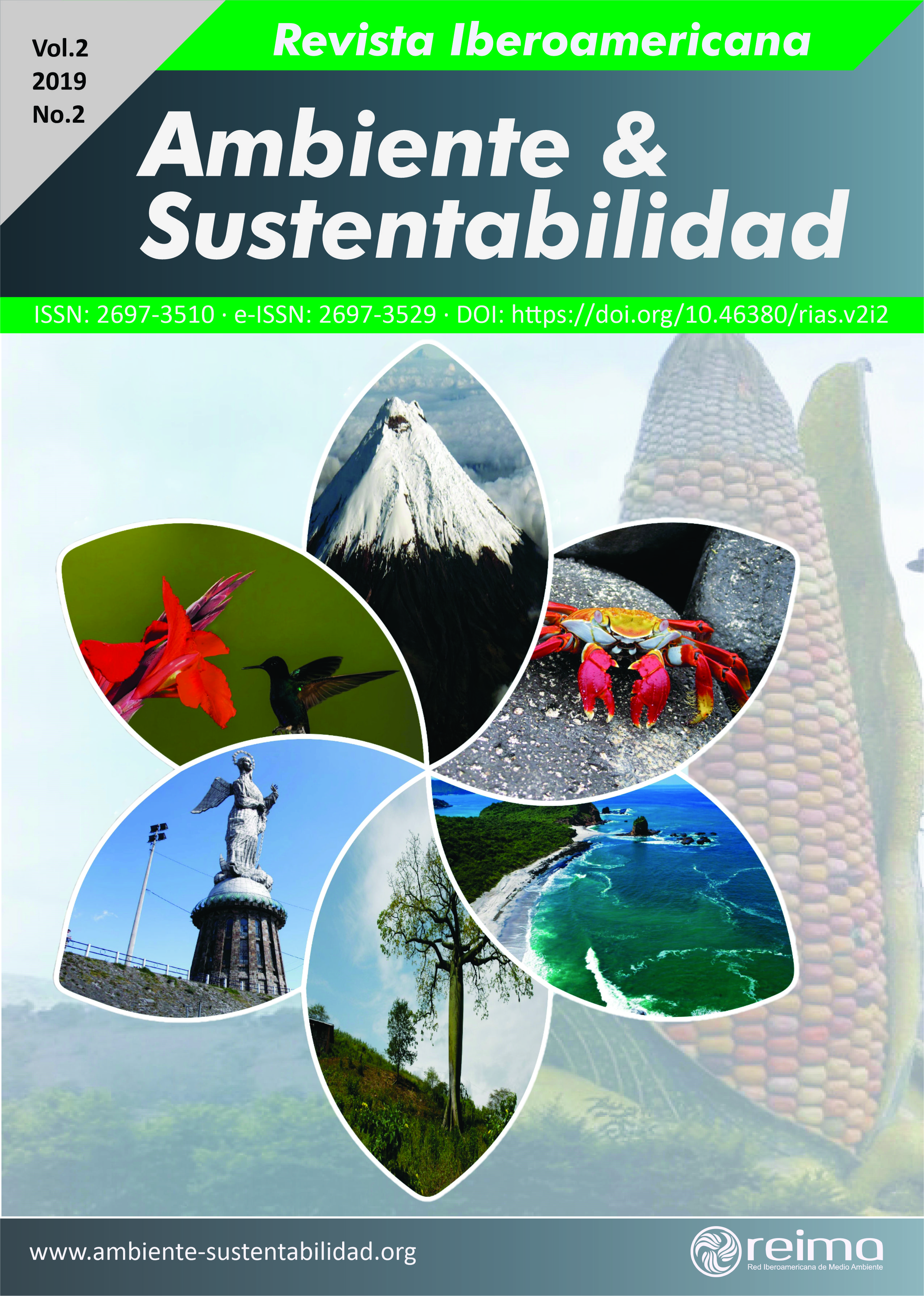The effect on using clean technology in the drill control of coffee fruit (Hypothenemushampei Ferrari).
DOI:
https://doi.org/10.46380/rias.v2i2.48Keywords:
coffee plantation, environmental contamination, ethological control, plants excerpts, semi-chemicalsAbstract
The inadequate use of chemical peptides on farming contribute to the environmental contamination, highlighting the toxicity on human beings, the atmosphere contamination capacity, soil and water and above all the use of persistent substances or bioacumulative. The investigation took place in Jipijapa, Paján y 24 de Mayo, Manabí province. The objective was to determinate the effect of use of clean technology for the control of Hypothenemus hampei Ferrari, thought the use of two experiments: implementation of craft traps (ethological control) and the use of Petiveria alliacea and Azadirachta indica excerpts that controls the Hypothenemus hampei Ferrari (fruit drill) on the Coffea arabica cultivate. The ethological control were four treatments and three repetitions on each place, making twenty locality/traps with two semi-chemicals (substances with chemical message) distributed approximately 20 m x 20 m, booking every the number of captured drills. For the excerpts three concentration and three frequencies were applied, building ten treatments and three repetitions. According to the Tukey test on p< 0.05 we determinate the difference between tests. On the ethological control we obtain p-valor: 0.023, with a variation coefficient of 8.91. On the excerpts we obtain a statistic difference in adults’ mortality (p-valor: 0.0075; CV: 1.38%) and eggs with a p-valor: 0.0084 y CV de 0.85%, proving that there are friendly options friendly for the environment on the coffee plantation control.
Downloads
Metrics
References
Acacio, G. y Gil, J. (2013). Efecto del color de trampa en la captura de la broca del café (Hypothenemus hampei Ferr.) en tres localidades de Tingo María. Investigación y Amazonía 2012, 2(1-2), 27-34. https://cutt.ly/sfcx0rF
Puerto, A., Suárez, S. y Palacio, D. (2014). Efectos de los plaguicidas sobre el ambiente y la salud. Revista Cubana de Higiene y Epidemiología, 52(3), 372-387. https://cutt.ly/1fcx2lI
Duicela, L. (2011). Manejo sostenible de las fincas cafetaleras. Buenas prácticas en la producción de café arábigo y gestión de la calidad en las organizaciones de productores. Fondo Común para los productos básicos y Consejo Cafetalero Nacional.
Duicela, L., Castillo, C., Cedeño, L., Chóez, F., Romero, F., Palma, R., Fernández, A., Macías, A., Farfán, D., Ramírez, J., Zambrano, L., Reyes, J., Farfán, D. y Aveiga, T. (2003). Tecnologías para la producción de café arábigo orgánico. Consejo Cafetalero Nacional, Manabí, Ecuador.
García, R., Riera, R., Rondón, J., Contreras, M., Moncada, N. y Rojas, E. (2005). Evaluación de alternativas como atrayentes alcohólicos de la broca del café Hypothenemus hampei dispuestos en trampas artesanales en Mesa Las Palmas del Estado Mérida [en línea]. Instituto Nacional de Investigaciones Agrícolas, Venezuela. https://cutt.ly/Nfcx9du
Escobar, C.N. (2018). Manejo Orgánico de Plagas en Frijol Ejotero (Phaseolus vulgaris L.) con Neem (Hypothenemus hampei, A. Juss) [Tesis de grado, Universidad Autónoma Agraria Antonio Narro]. https://n9.cl/ghw5g
Fernández, S. y Cordero, J. (2007). Biología da broca do café Hypothenemus hampei (Ferrari) (Coleóptera: Curculionidae: Scolytinae) em condições de laboratório. Biagro, 19(1), 35-40. https://n9.cl/ne05
Mendoza, J.R. (1991). Resposta da broca-do-café, Hypothenemus hampei, a estimulos visuais e semioquímicos [Tesis de Maestría, Universidade Federal de Viçosa]. https://cutt.ly/Kfcx4rL
Downloads
Published
How to Cite
Issue
Section
License
Copyright (c) 2019 Richard Leonardo Palma Ponce, Jesús de los Santos Pinargote Chóez

This work is licensed under a Creative Commons Attribution-NonCommercial-ShareAlike 4.0 International License.
This work is licensed under a Creative Commons Attribution-NonCommercial-ShareAlike 4.0 International License (CC BY-NC-SA 4.0)
© This license allows users to distribute, remix, adapt, and build upon the material in any medium or format, provided that attribution is granted to the creator.














